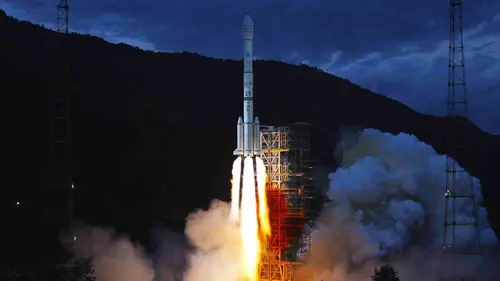China is working on reusable launch vehicles and has achieved progress in some key areas, a carrier rocket official said Thursday.
The processes under development include parachute-landing and propulsion-landing, said Lu Yu, Director of Science and Technology Committee of the China Academy of Launch Vehicle Technology (CALT) at the Global Space Exploration Conference (GLEX 2017).
Reusable lift-body launchers will be developed in three stages – rocket-engine partial reusable vehicle, rocket-engine full reusable vehicle and combined cycle-engine reusable vehicle, said Lu.
The Long March carrier rockets still have room for improvement, Lu said, adding that the CALT is developing a heavy-lift launch vehicle with a payload of 140 tons to low Earth orbit and 50 tons to lunar transfer orbit.
The Long March-9 is currently China's only heavy-lift carrier rocket, and is expected to be sent into space by 2030, he said.
According to Lu, a low-cost commercial medium launch vehicle, the Long March-8 is under development, and based on the Long March-8, a new high-orbit medium launch vehicle should be designed to improve the Long March series and enhance competitiveness.
Since China's space transportation system started in 1960s, a total of 17 types of launch vehicles have been developed. As of May 2017, Long March series carrier rockets have conducted 246 flights with a success rate of 96 percent, fulfilling missions including the launch of manned spacecraft, a moon rover and the BeiDou Navigation Satellite System.
Models of the Long March series.
As of present, the Long March series has finished 55 international launches, sending 64 payloads into orbit for more than 20 countries and regions.
China will also enhance cooperation by renting foreign launch sites to improve launch flexibility, building international launch sites at equatorial regions, and developing sea-based launch platforms with other countries, he said.
(ASIA PACIFIC DAILY)
 简体中文
简体中文

